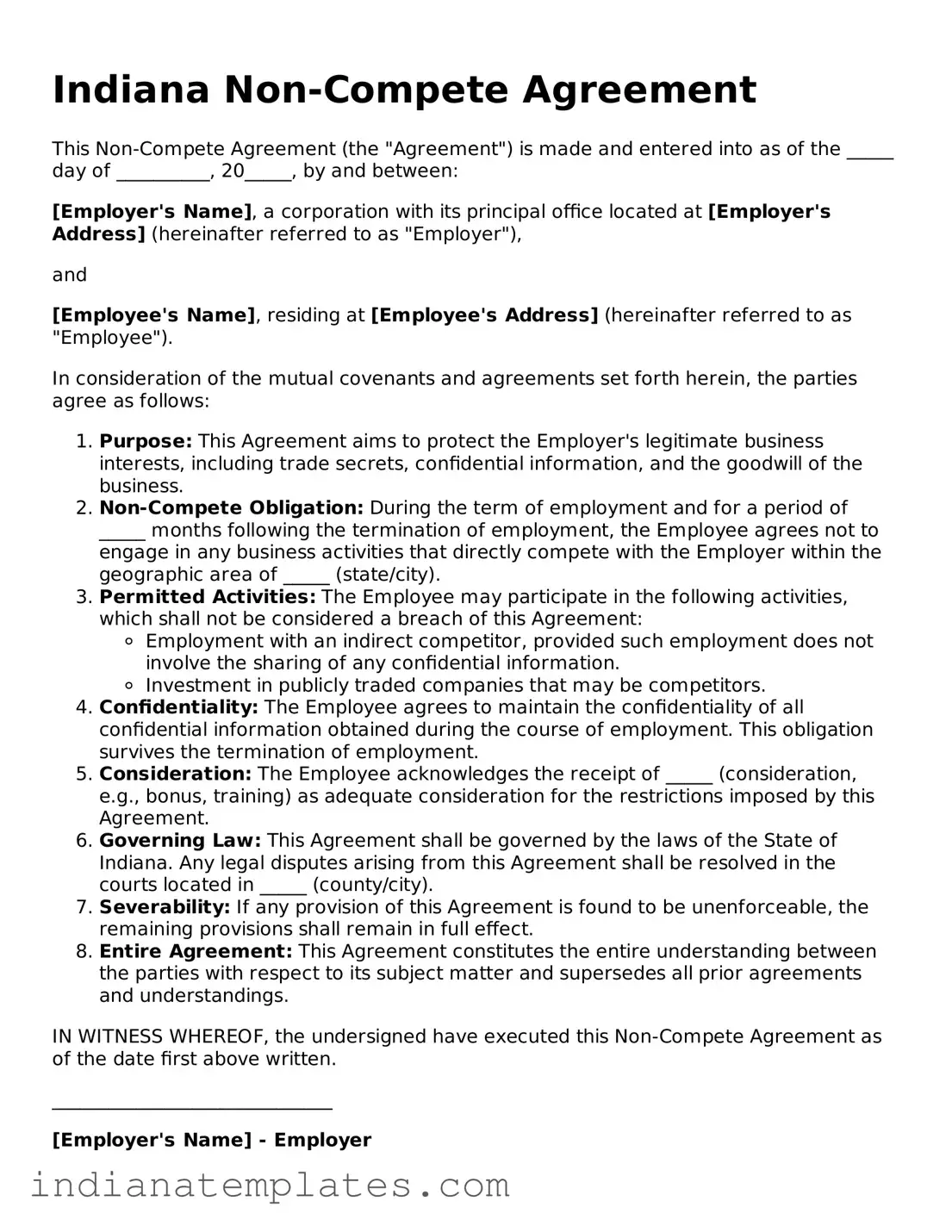The Indiana Non-Compete Agreement is similar to an Employment Agreement. Both documents outline the terms of the relationship between an employer and an employee. While an Employment Agreement typically covers job responsibilities, salary, and benefits, a Non-Compete Agreement specifically restricts the employee from engaging in similar work within a certain geographical area and timeframe after leaving the company. This ensures that the employer can protect their business interests and proprietary information.
Another document closely related to the Indiana Non-Compete Agreement is the Confidentiality Agreement, also known as a Non-Disclosure Agreement (NDA). This document focuses on protecting sensitive information shared between parties. While the Non-Compete Agreement limits where and how an employee can work after leaving, the Confidentiality Agreement prevents them from disclosing trade secrets or other confidential information during and after their employment. Both serve to protect a company's interests, but they target different aspects of the employer-employee relationship.
The Indiana Non-Compete Agreement also shares similarities with a Partnership Agreement. In both cases, the parties involved may want to restrict certain competitive actions to protect their investment and business interests. A Partnership Agreement typically outlines the roles, responsibilities, and profit-sharing arrangements among partners, while a Non-Compete Agreement specifically addresses competition and the potential for conflict of interest. Both documents are essential for maintaining a healthy business environment.
Another related document is the Independent Contractor Agreement. This agreement governs the relationship between a business and a contractor, outlining the terms of their work. Like the Non-Compete Agreement, it may include clauses that restrict the contractor from working with competitors after the contract ends. This helps businesses safeguard their proprietary information and maintain a competitive edge in the market.
The Indiana Non-Compete Agreement can also be compared to a Licensing Agreement. Licensing Agreements allow one party to use another's intellectual property under specific conditions. They often include restrictions on how the licensed material can be used, similar to how a Non-Compete Agreement restricts an employee's ability to work in competing businesses. Both documents aim to protect the rights and interests of the party granting the license or the employment opportunity.
Additionally, the Indiana Non-Compete Agreement is akin to a Release of Liability Agreement. While the primary purpose of a Release of Liability Agreement is to protect one party from claims arising from the actions of another, it can also include clauses that limit competition or future claims related to business practices. Both documents are designed to minimize risk and protect interests, albeit in different contexts.
For individuals looking to ensure their future decisions are respected, a comprehensive approach to Durable Power of Attorney forms is vital. This document empowers you to appoint a trusted person to manage your financial and healthcare decisions, especially during times when you might be unable to do so yourself.
Lastly, the Indiana Non-Compete Agreement is similar to a Severance Agreement. A Severance Agreement outlines the terms under which an employee leaves a company, often including compensation and benefits. It may also contain clauses that restrict the employee from competing with the company afterward. This helps to ensure that the business remains secure even after an employee departs, similar to the protective measures found in a Non-Compete Agreement.
